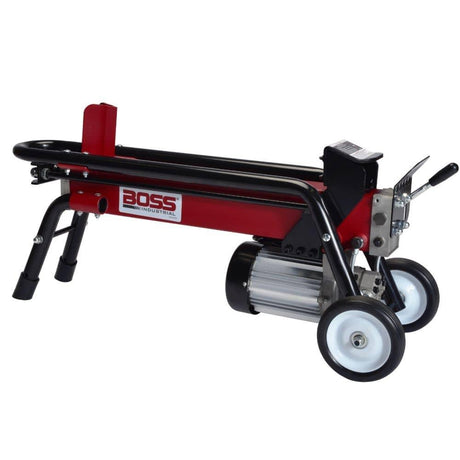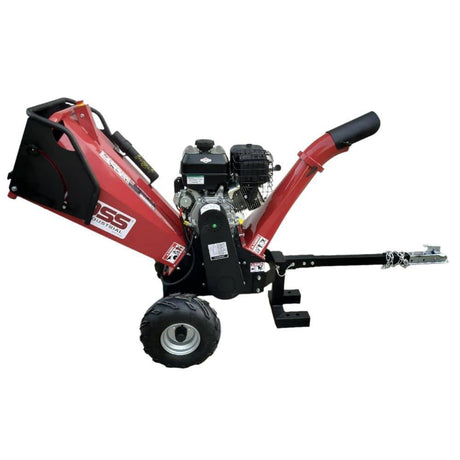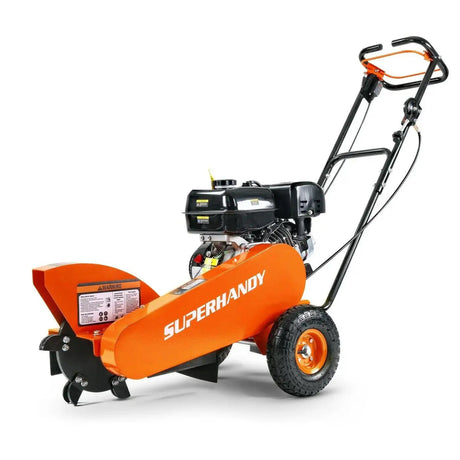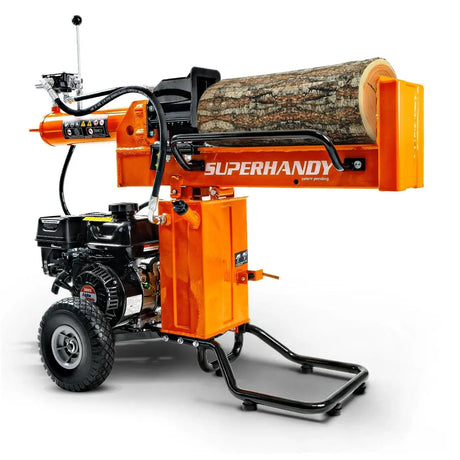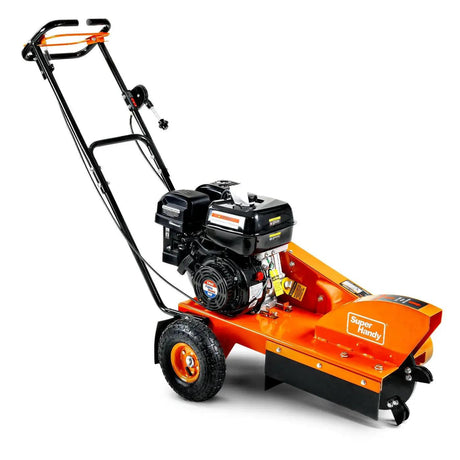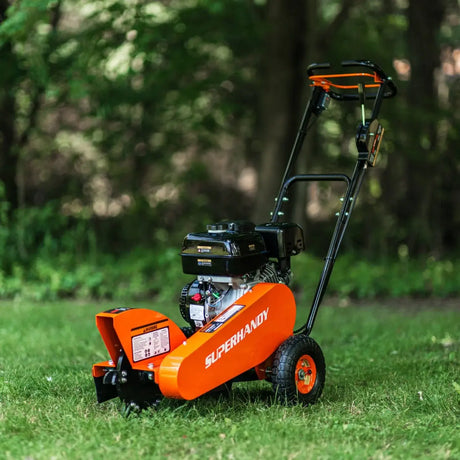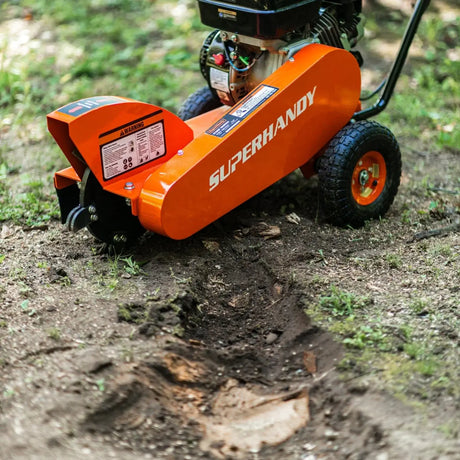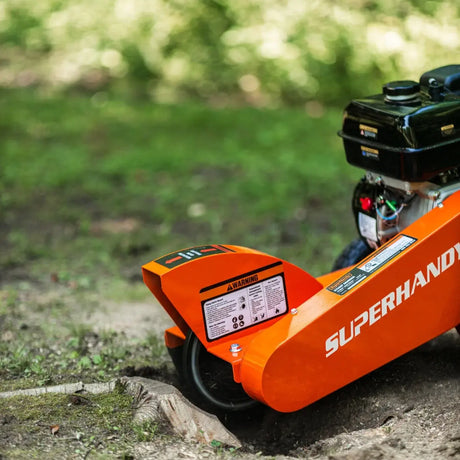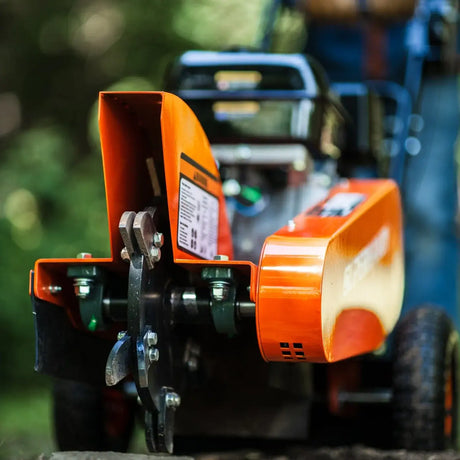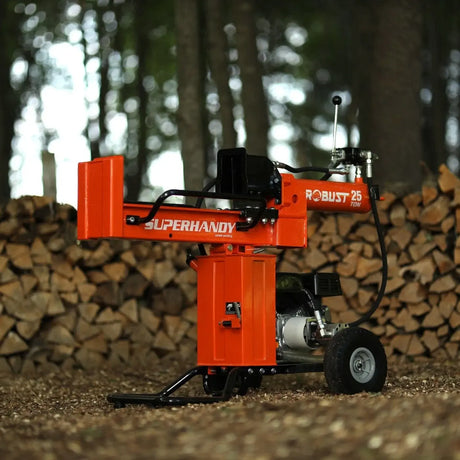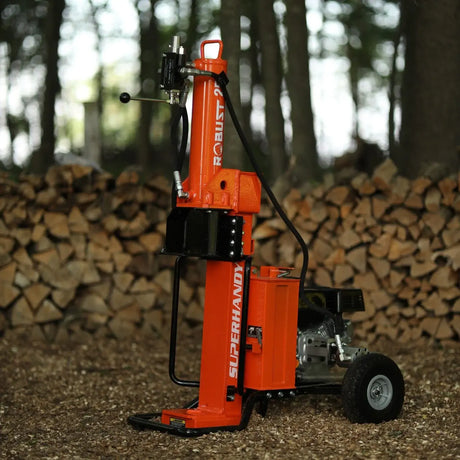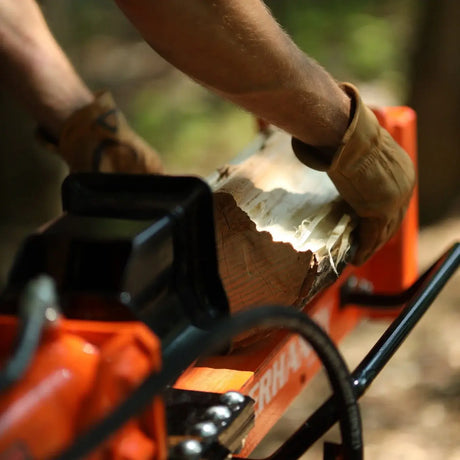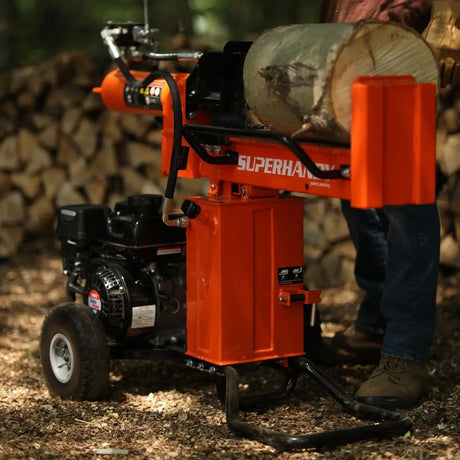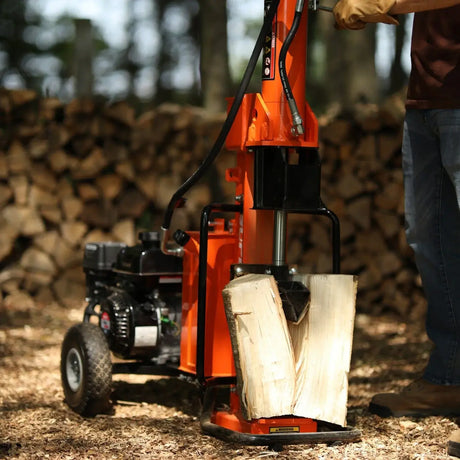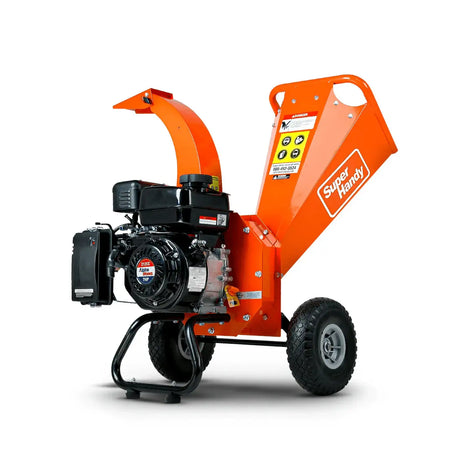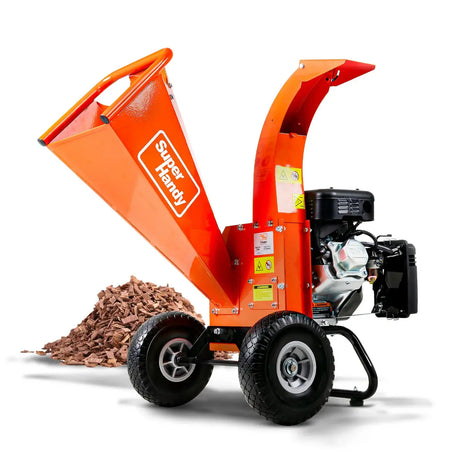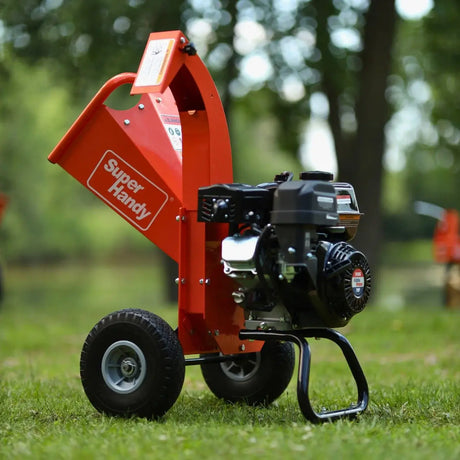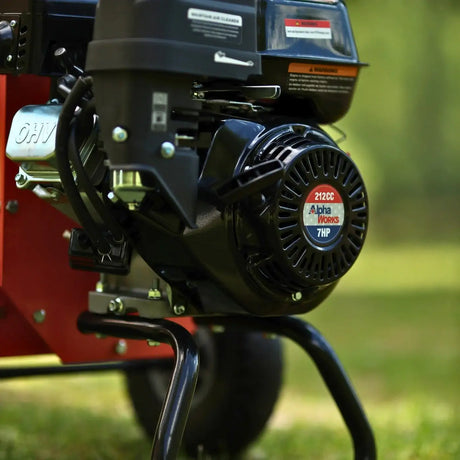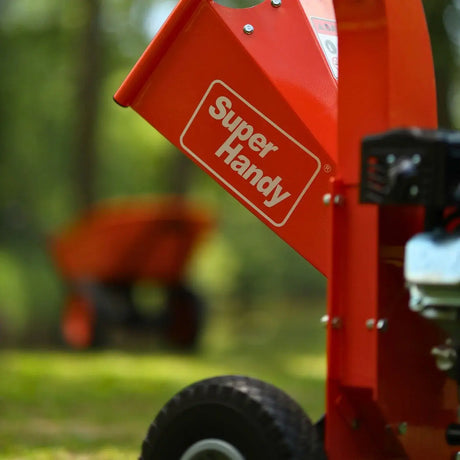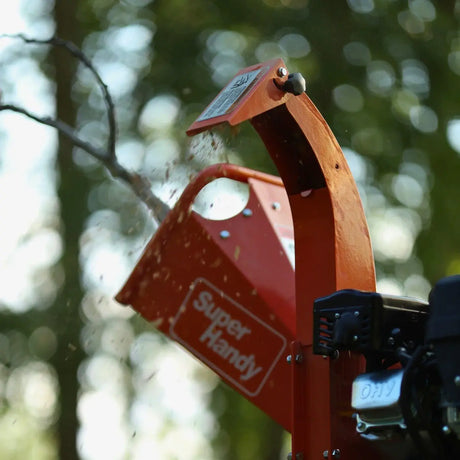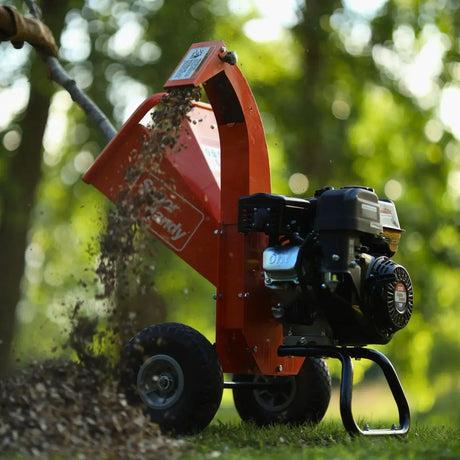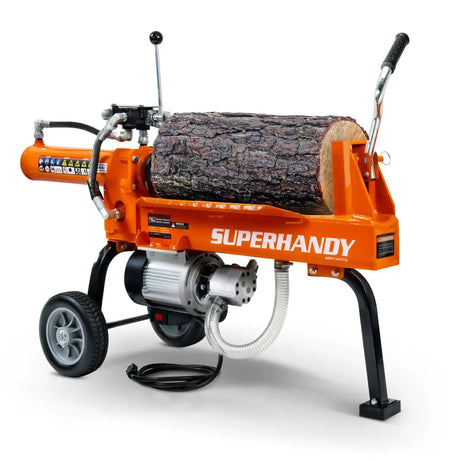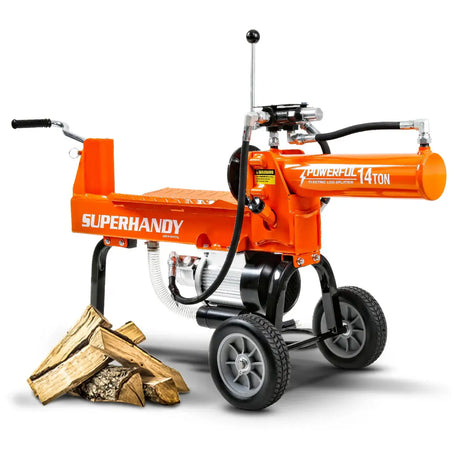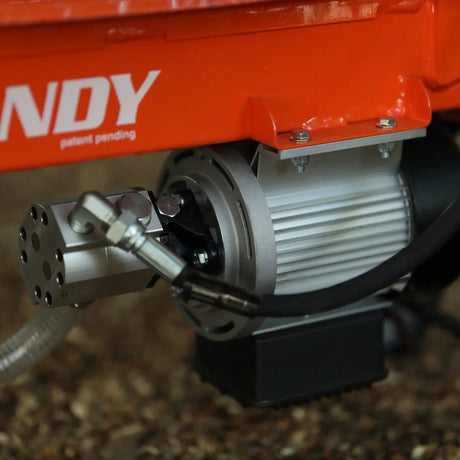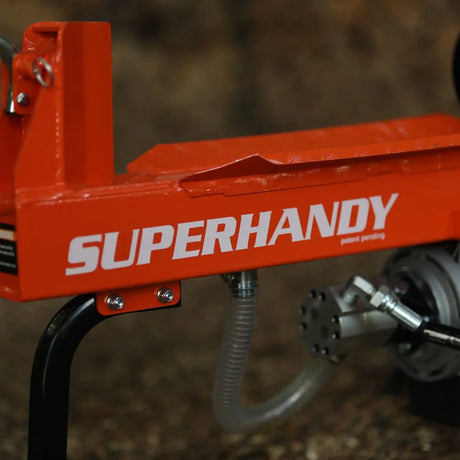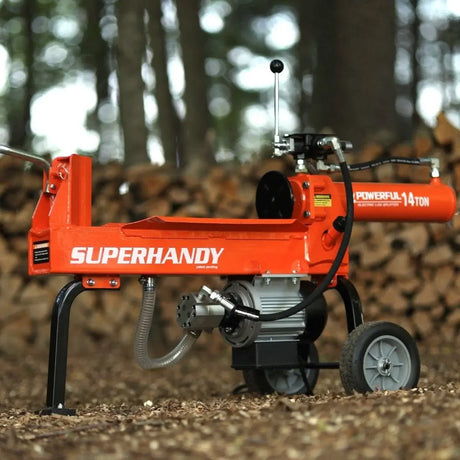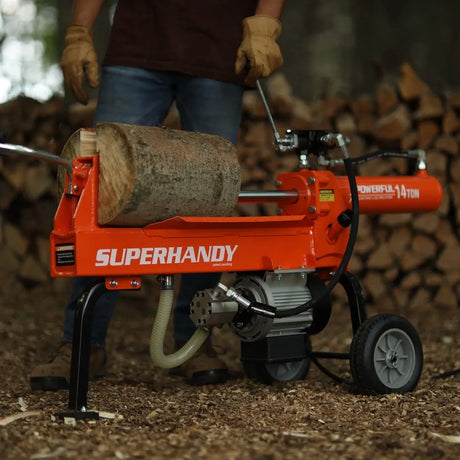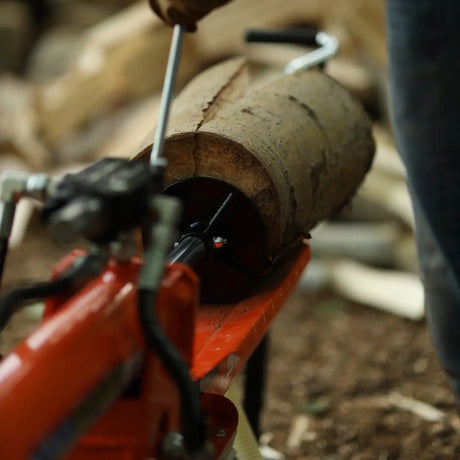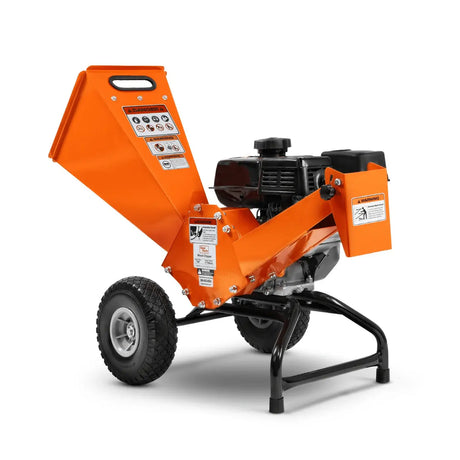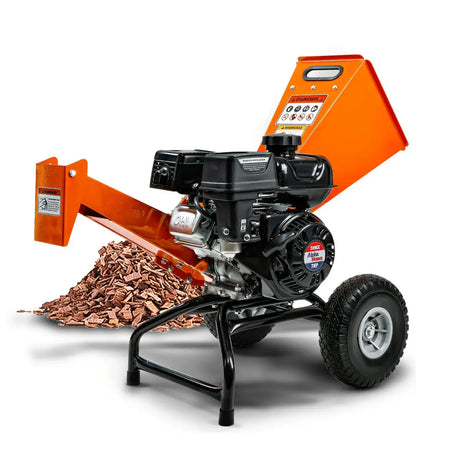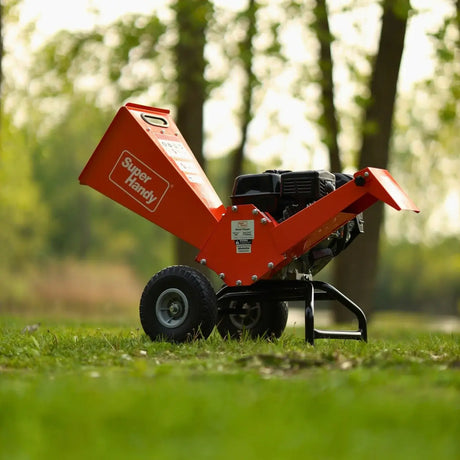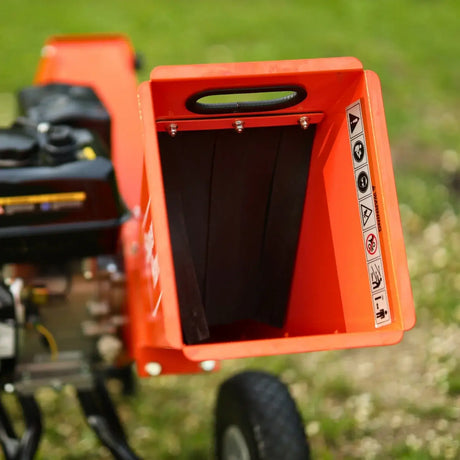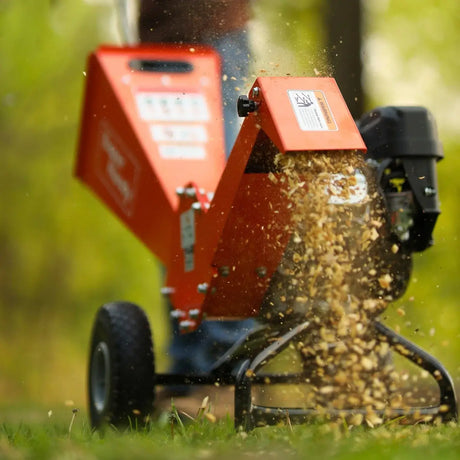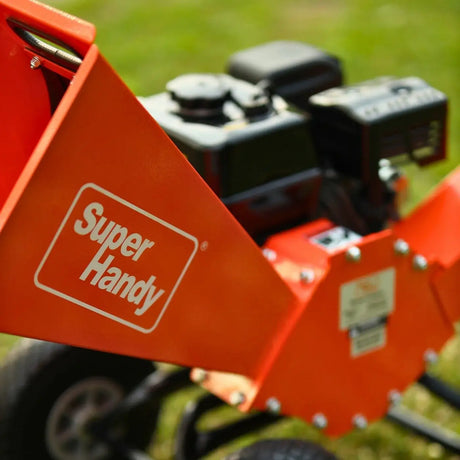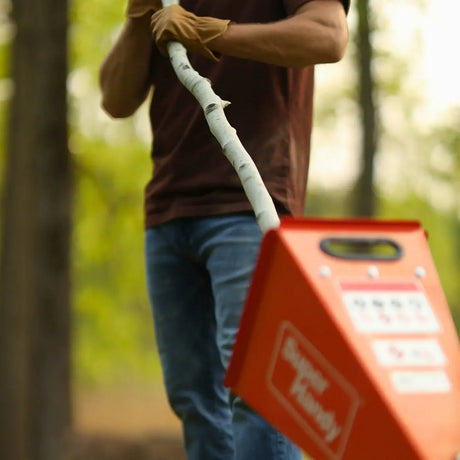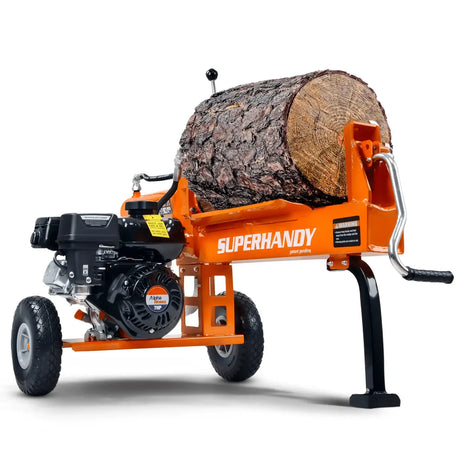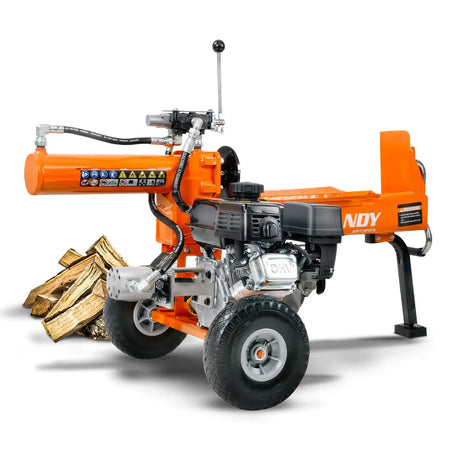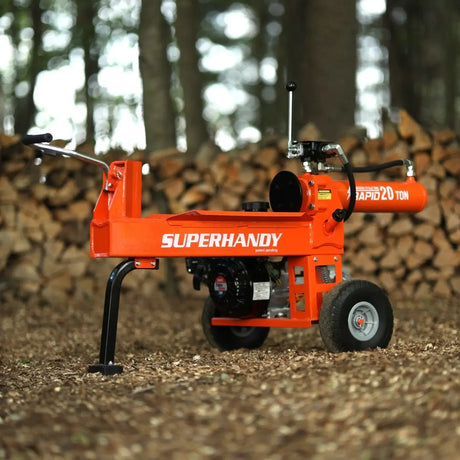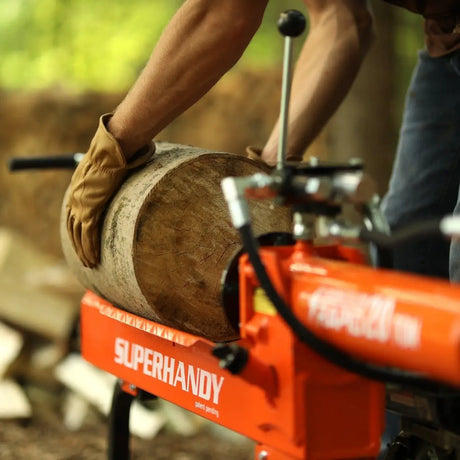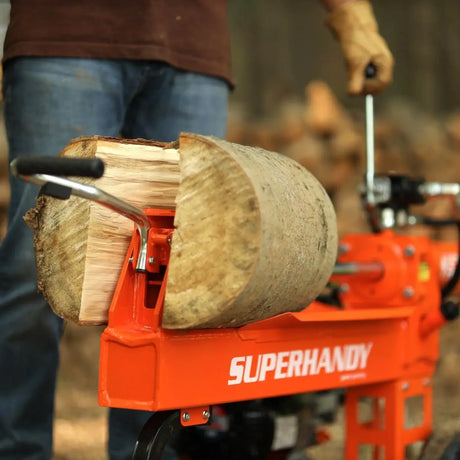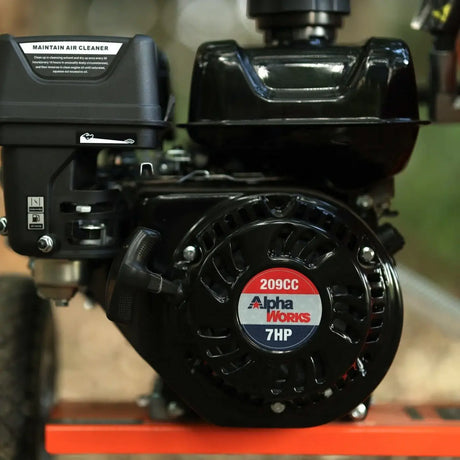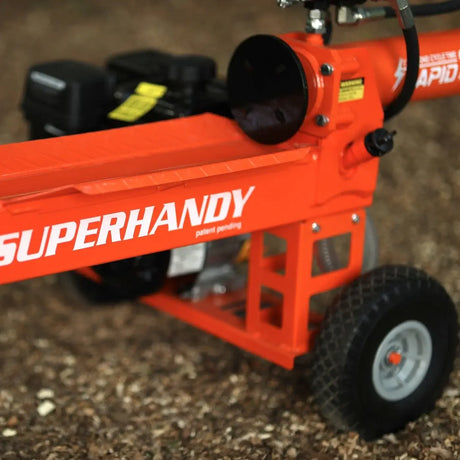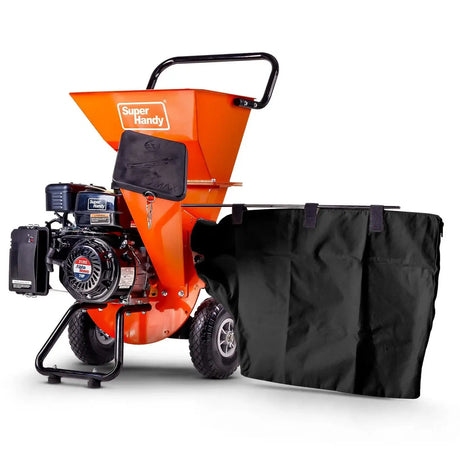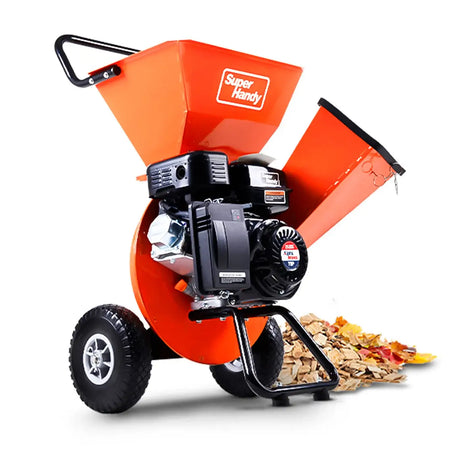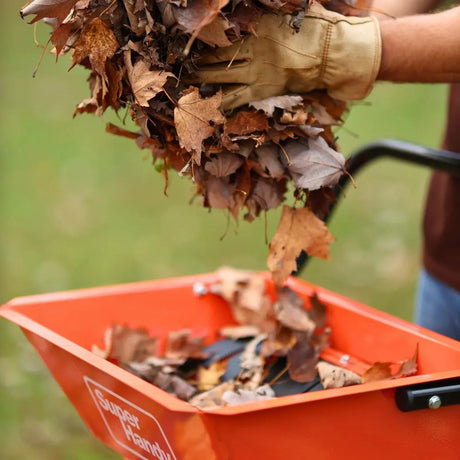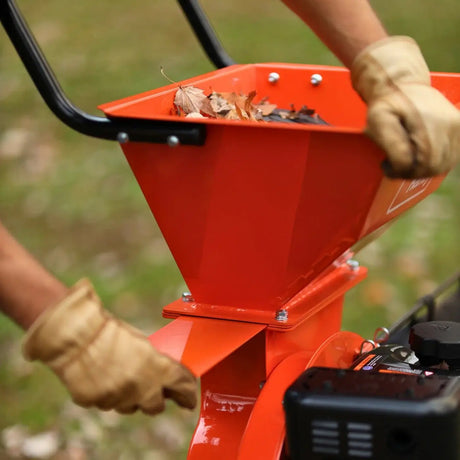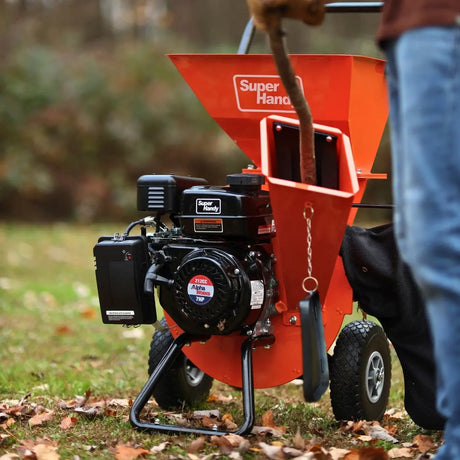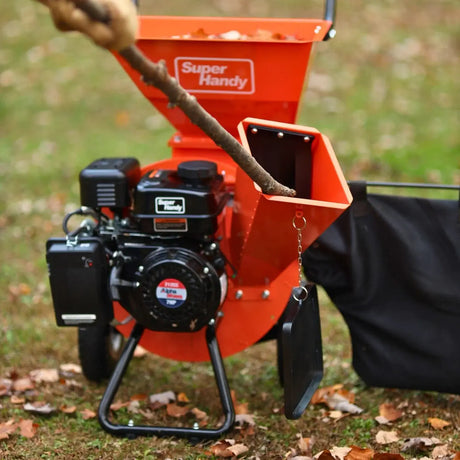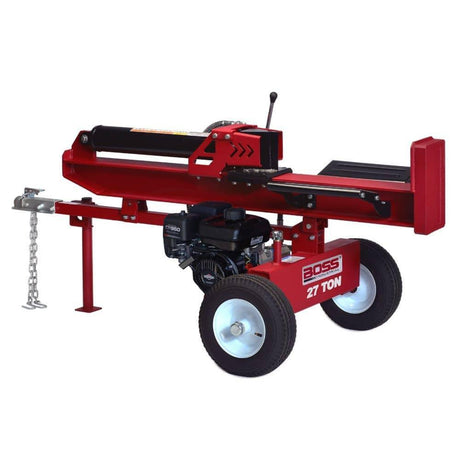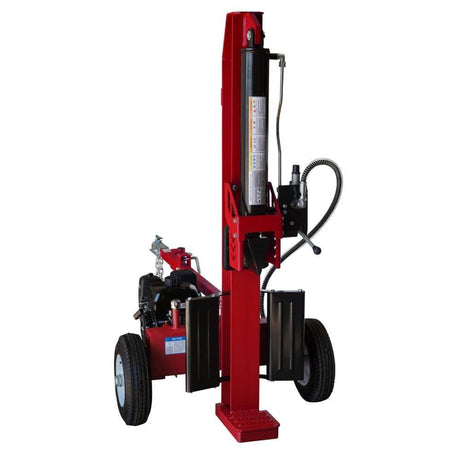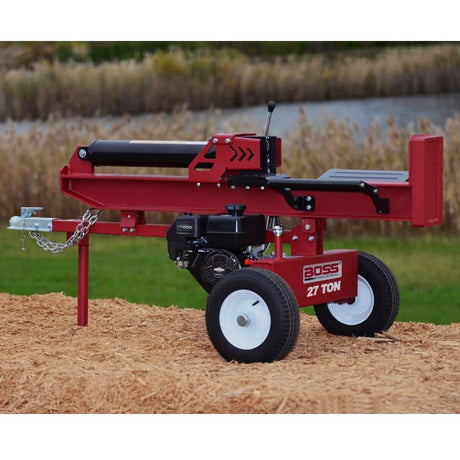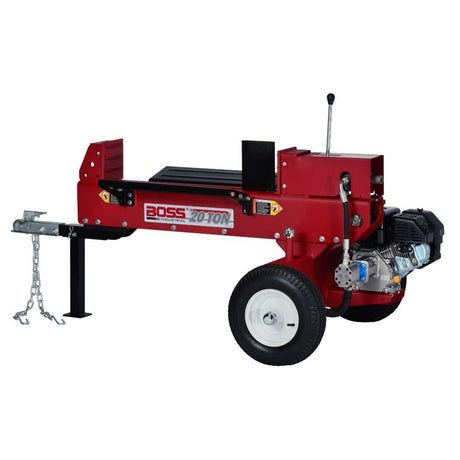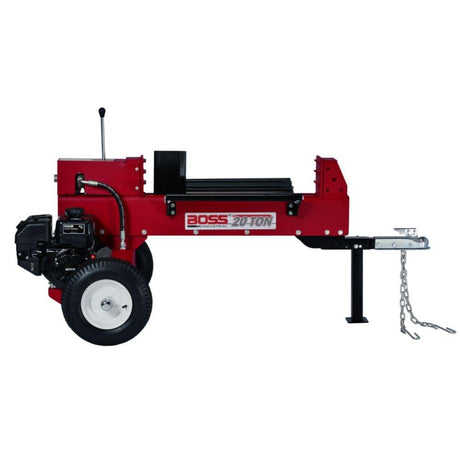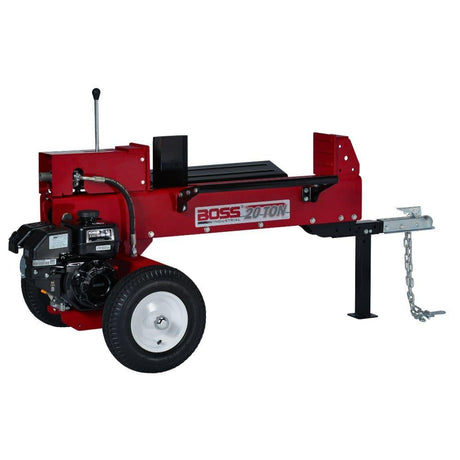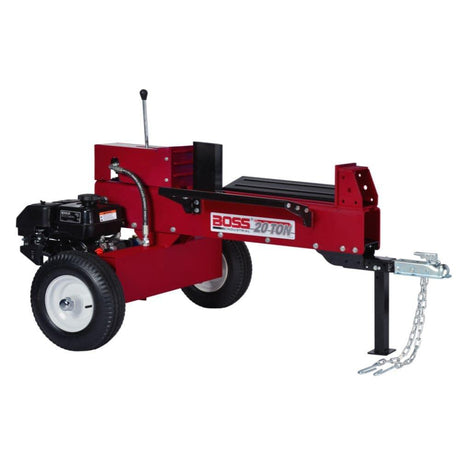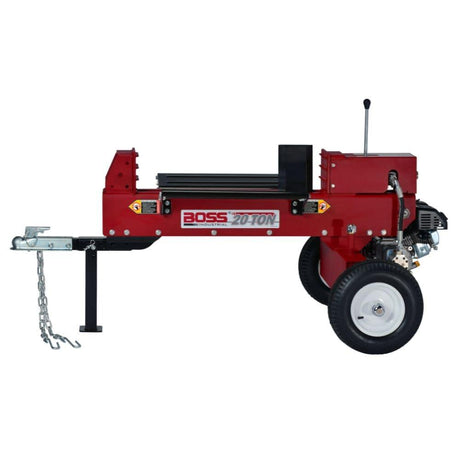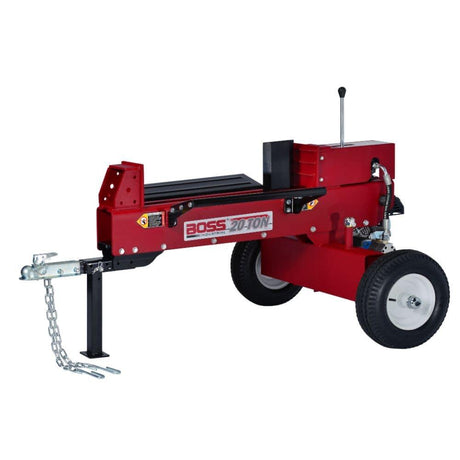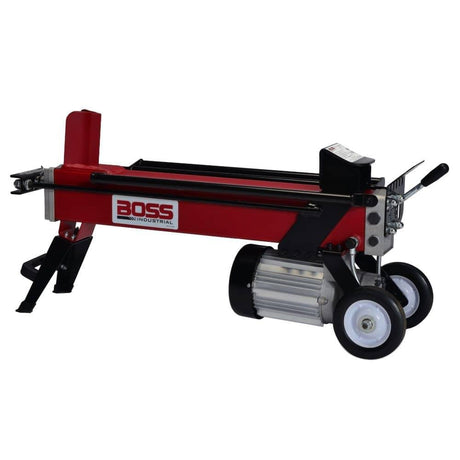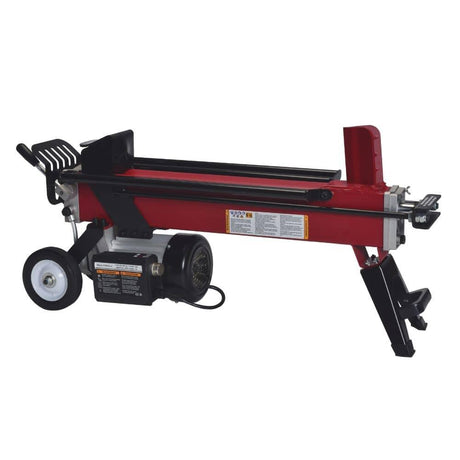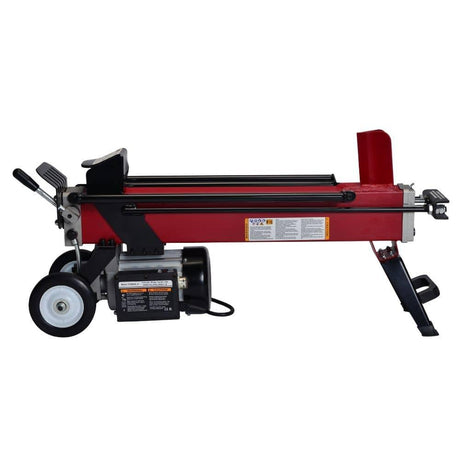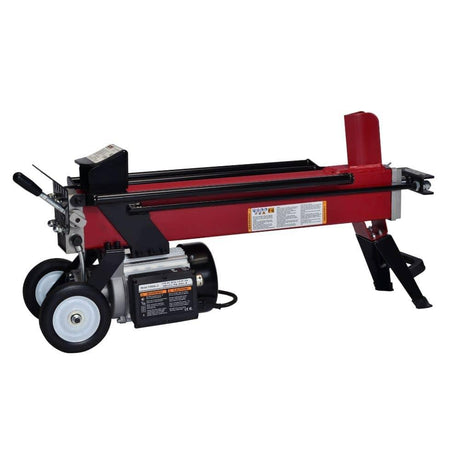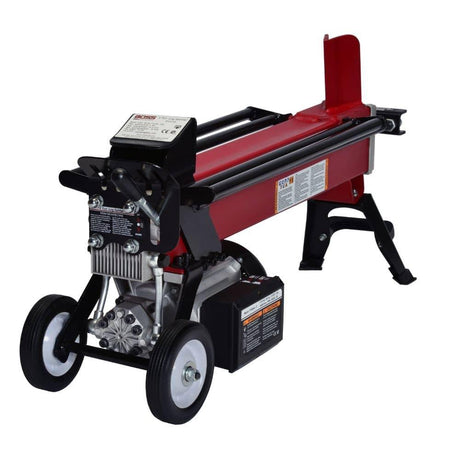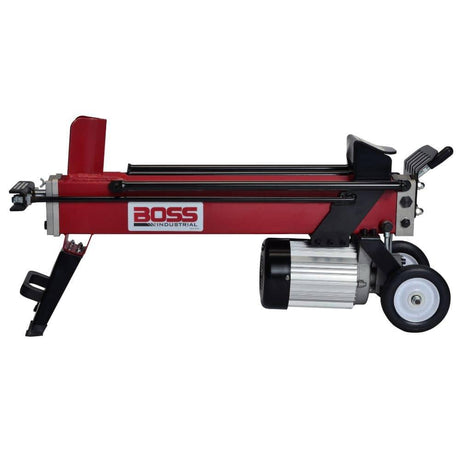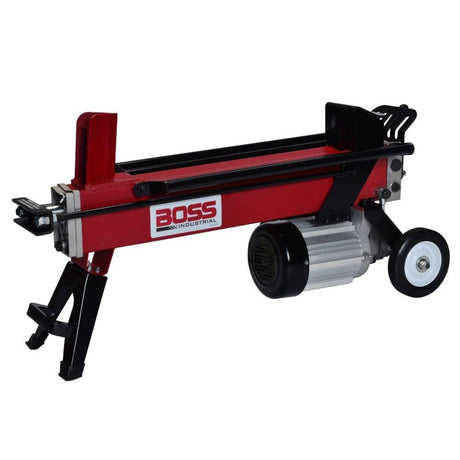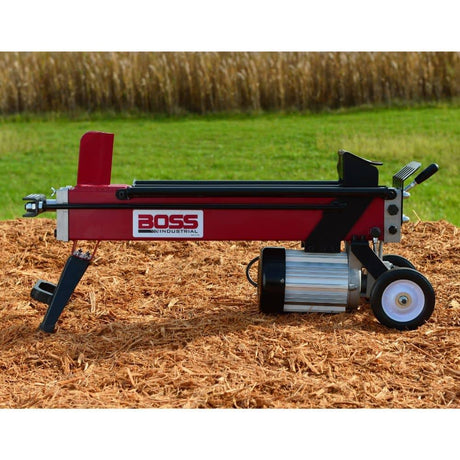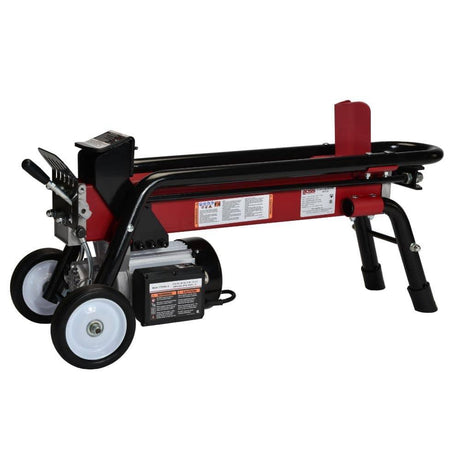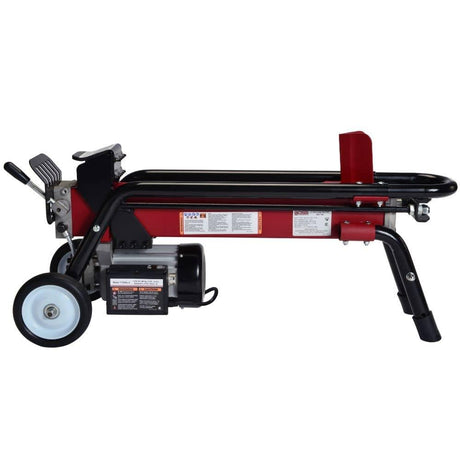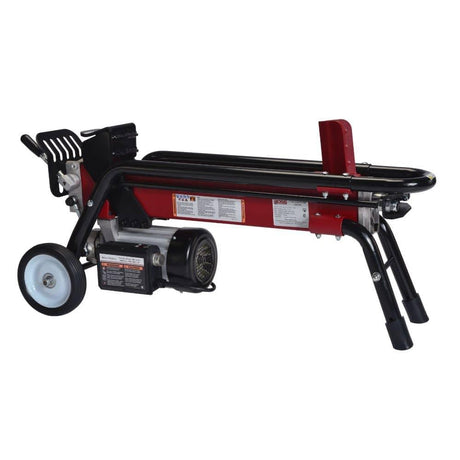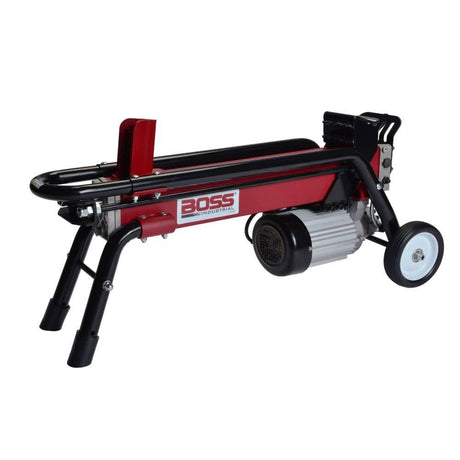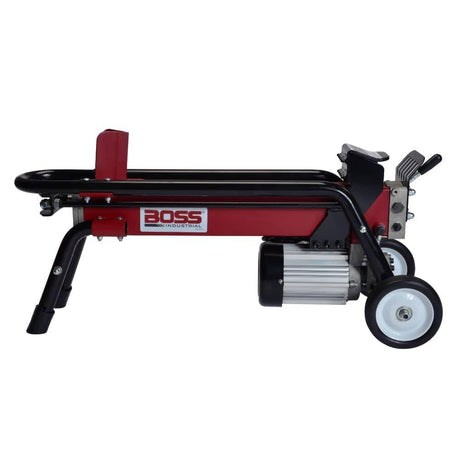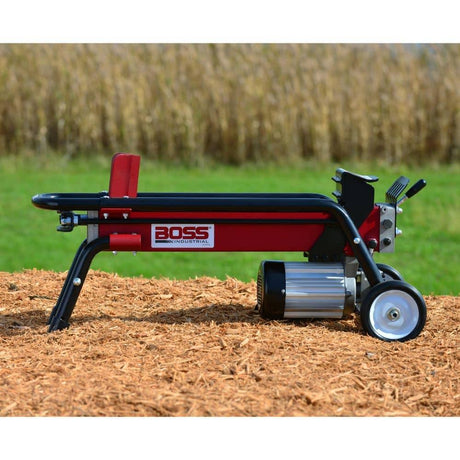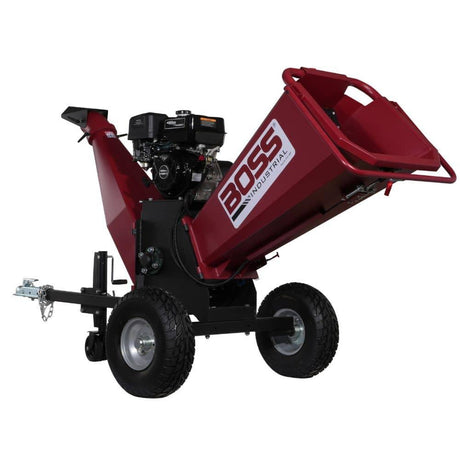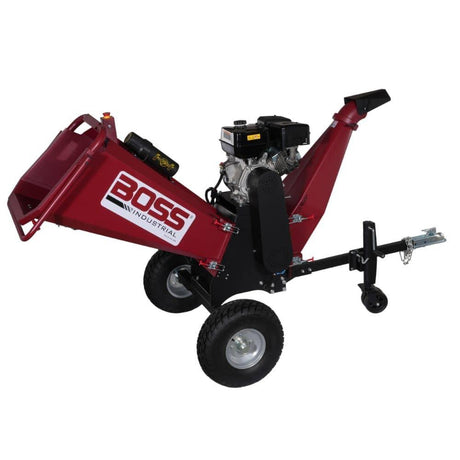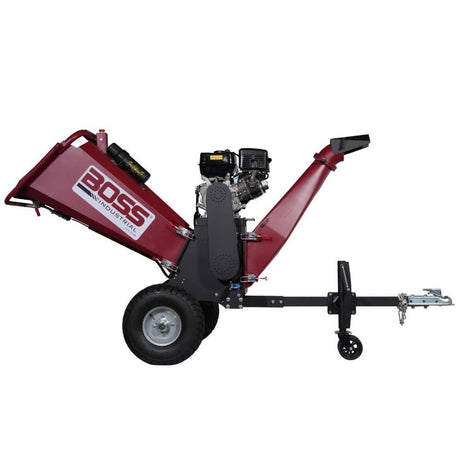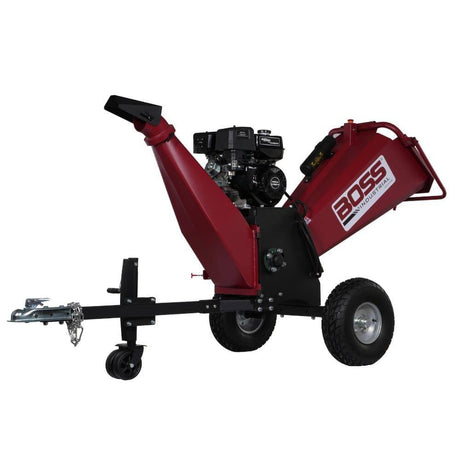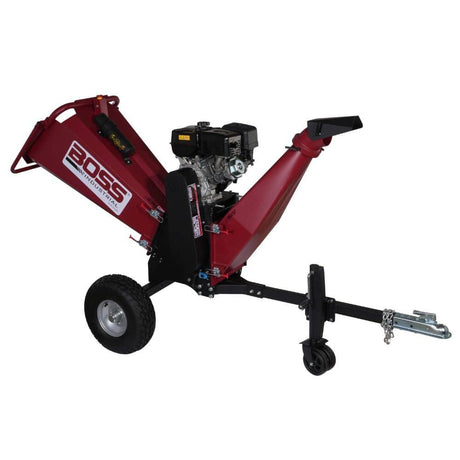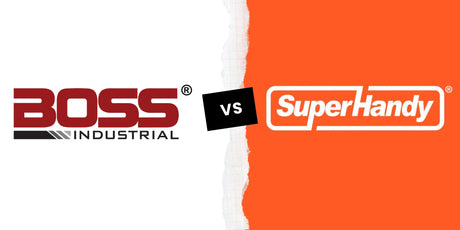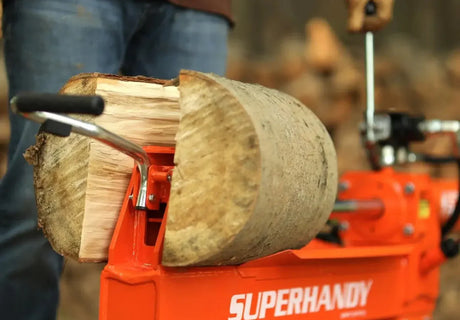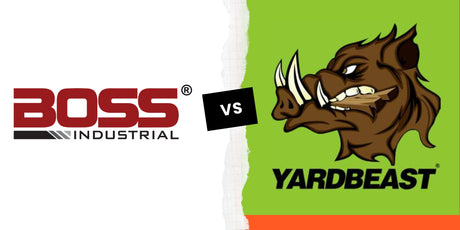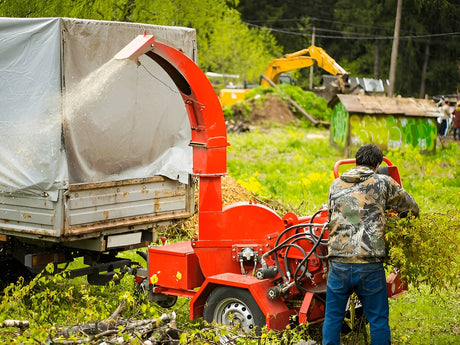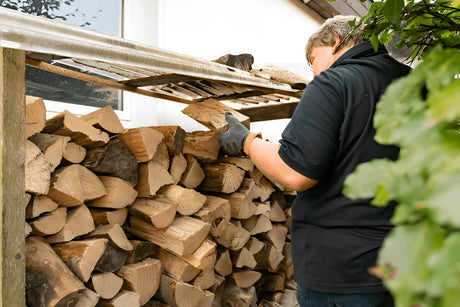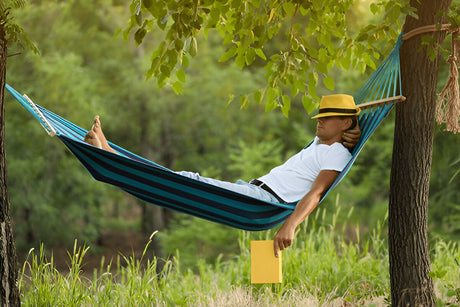Chipping tree branches isn't just about cleanup - it's about doing it efficiently, safely, and turning yard waste into valuable wood chips for mulch or compost. Whether you're dealing with a dead tree, a large tree you've just taken down, or a pile of green wood after spring pruning, this guide walks you through how to chip tree branches safely from prep to execution.
Key Takeaways
- Always wear proper safety gear like gloves, safety glasses, ear protection, and durable boots.
- Prep the area to avoid trip hazards and streamline your workflow.
- Use a wood chipper matched to the diameter and volume of your branches.
- Feed material slowly, standing on the opposite side of the discharge chute.
- Use the resulting chips for mulch, ground cover, or to fill your compost pile.

Essential Safety Gear
Before using a wood chipper, take safety seriously. Whether you're clearing a dead tree, trimming tree limbs, or processing a large tree in your yard, the right gear protects you from flying debris, loud noise, and unexpected accidents. Here's what to wear to chip branches safely and with confidence.
Before selecting your equipment, it's crucial to understand the differences between wood chippers, shredders, and mulchers to ensure you're using the right tool for the job.
Eye and Ear Protection
Even a small chip from a tree limb or trunk can cause serious injury. And a loud gas-powered machine running all day? That can take a toll on your hearing.
Wear:
- Safety glasses with side protection to block flying wood chips and dust.
- Noise-reducing earmuffs or earplugs - especially when using a gas chipper or working near a hard surface like your house, where sound bounces back.
Tip: If you're chipping near walls or fences, you're more likely to get debris blowback. Don't skip the eye protection.
Proper Clothing
Loose clothing is dangerous around fast-moving parts. It can get caught when feeding limbs or clearing the discharge chute.
Best choice:
- Fitted long sleeves, pants, and work gloves to protect your skin from sharp branches and rough wood.
- Skip hoodies, dangling drawstrings, jewelry, or anything that could snag.
Seasonal tip: In winter, use a snug outer shell. In spring and fall, go for breathable but protective layers.
Foot and Hand Protection
Handling logs, feeding large branches, or moving green wood means your hands and feet take a beating.
Use:
- Steel-toe boots with good grip to stay safe on uneven or soft ground.
- Heavy-duty gloves to protect from splinters, pinches, and sharp wood edges.
Avoid: Sneakers or worn shoes - they won't hold up to a falling log or shifting pile.
Extra tip: Wet gloves from damp tree limbs can slip easily. Keep a dry backup pair nearby if you're working through a big yard cleanup.

Preparing the Work Area
Before you power up your wood chipper, make sure your work zone is clean, safe, and well-organized. Good prep reduces the risk of a serious injury and makes chipping tree branches way more efficient.
Clearing Trip Hazards
A messy work zone can be dangerous - especially when you're lifting heavy limbs or operating powerful machines.
Before chipping, clear the ground of:
- Hidden tree roots, large rocks, and scrap wood that could catch your boot or snag a branch.
- Loose tools like your chainsaw, saw, or shovel - they should be off to the side, never underfoot.
- Old stump pieces or timber left behind from previous cleanups.
Staying upright while feeding tree limbs is non-negotiable. Removing trip hazards helps you keep balance, especially when working with heavy logs or a large pile of branches.
Setting Up the Chipper
Positioning matters. A poorly placed chipper can send debris flying in the wrong direction or make footing unsafe.
Tips for safe setup:
- Place the machine on firm, level ground - avoid soft soil or slopes where it might tilt.
- Angle the discharge chute in the opposite direction of people, cars, buildings, or garden areas.
- If you're on a slope, always stand on the uphill side of the chipper when feeding material. Never work downhill - it puts you in the path of falling limbs and unexpected kickback.
Organizing Branches
Scattered branches waste time and increase the risk of missteps. Prepping your material helps keep the process smooth and steady.
Here's how to organize efficiently:
- Separate small branches from large branches so you can feed them consistently based on the chipper's reduction ratio.
- Cut oversized tree limbs down to manageable lengths - anything longer than 4 to 5 feet should be trimmed with a chainsaw or saw.
- Keep tree limbs at or below shoulder height for safe and easy lifting.
- Stack green wood, dead tree branches, and logs in different piles so you can adjust feed speed and avoid clogging.
Organizing your yard debris before chipping gives you better control, saves energy, and keeps the work steady - especially if you're handling material from a falling tree or trimming your own tree after a storm.

Operating the Wood Chipper Safely
Using a wood chipper the right way is key to avoiding serious injury. Stay sharp, stay clear, and let the machine do the work.
Feeding Branches
- Always feed from the opposite side of the discharge chute, keeping a steady, two-hand grip.
- Stand to one side, not behind the branches.
- Feed tree limbs, not full logs, stumps, or tangled piles.
- Respect the rated diameter-never force large branches or chunks of tree trunk.
- With green wood, expect resistance. Dead tree limbs chip easier but may snap - feed slowly to avoid jams.
- If your own tree has long limbs, trim them down first to manage the flow and maintain balance.
Maintaining a Safe Distance
Once a limb is moving into the infeed, do not reach in - ever.
- Keep hands, gloves, and sleeves back.
- A second person should only observe or assist with loading, not push material.
- Never lean over the chute, even for quick adjustments.
Using a Push Stick
- If a branch stalls, use a wooden push stick or stub - never your hand.
- Shut off the chipper, let all parts stop completely before clearing.
- A stuck tree limb isn't worth a serious injury - take your time and be careful.


Routine Maintenance and Troubleshooting
Regular Maintenance Tasks
Before each use:
- Check oil, filter, and blades.
- Inspect the chipper's reduction ratio (some reduce by 10:1 - ideal for large piles).
- Grease fittings and clear the discharge chute.
A dull blade won't chip - it'll jam and stress the machine. Sharpen as needed.
To ensure longevity and optimal performance, regular maintenance of your wood chipper is essential.
Troubleshooting Common Issues
Problem: Chipper won't start
- Check spark plug, fuel, and kill switch.
Problem: Material jams
- Turn off, remove material, and check for wet wood, large diameter limbs, or poor feed technique.
Problem: Weak performance
- Blade dull, drive belt loose, or green wood overload.
If you encounter operational challenges, refer to this guide on troubleshooting common wood chipper problems for effective solutions.
When to Call a Professional
Sometimes, the smartest move is knowing when to step back and let the pros take over. Here's when it makes sense.
Large Quantities of Branches
If you're dealing with more than just a few tree limbs-like a full tree trunk, a large tree removal, or multiple dead tree cleanups-DIY gets overwhelming fast.
- Dozens of limbs, piles of green wood, or dense underbrush? That's a full day's work or more.
- Renting or buying a wood chipper can be more cost-effective than hiring out if you expect regular cleanup or manage your own land.
- Owning a chipper also means you can work at your own pace, turn wood chips into mulch, and save on hauling costs.
Tip: A quality wood chipper is a smart investment for anyone regularly clearing storm debris, pruning trees, or managing a yard full of tree starts and fast-growing limbs.
Hazardous Situations
Skip the DIY if you're working in or around:
- Power lines or overhead wires
- Unstable stumps or active falling tree zones
- Slopes with large, shifting tree trunks
- Timber over 12" in diameter or logs needing cranes to move
Professionals come equipped with insurance, training, and industrial gear that's designed for these kinds of serious injury risks. No yard job is worth taking unnecessary chances.
If your current equipment isn't up to the task, consider this guide on choosing the right wood chipper for your needs before deciding to hire a professional.

Summary
Learning how to chip tree branches safely can completely change your yard maintenance routine. Whether you're managing a dead tree, cleaning up after fall, or just reshaping your garden, a wood chipper helps you turn messy branches into useful mulch or wood chips. It's a smart move for your land, plants, and wallet - and a well-maintained chipper becomes one of your best yard tools.
If you manage your own tree work often, it might be time to own a quality chipper. We sell models built for safety, performance, and durability - whether you're working through winter, clearing stumps, or breaking down timber from a recent falling tree. Ready to turn limbs into value? We've got the machine for the job.
While owning a wood chipper offers numerous benefits, it's important to be aware of the cost considerations when purchasing a wood chipper to make an informed decision.


